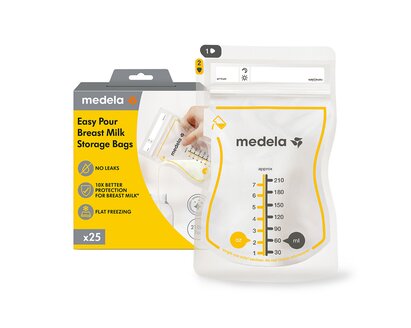From research done by Jackie Kent at The University of Western Australia they found that the frequency that babies fed had no real ‘norm’ for every baby. What they saw was that normal healthy babies who were born at full-term gestation and were gaining weight effectively would feed anywhere from 4- 13 times daily in months 1-6 after birth! That’s a huge difference from baby to baby, so why might this be happening?
One reason may be down to the fact that all of us have a different amount of breast tissue and lactocytes (milk-making cells) in our breasts; none of us are the same, we won’t even have exactly the same amount of lactocytes in our left or our right breasts!
What we also know from the Jackie Kent research is that babies drink on average 800ml of milk each day from month 1-6. Of course, some babies drink far more and some far less, the range was 478ml – 1356ml a day!
Imagine…
- Your baby and my baby both drink 800ml per day through breastfeeding.
- Your breasts make 150mls of milk for each feed and my breasts make about 70mls of milk for each feed.
- Which one of our babies will need to feed more often to get the same amount of milk by the end of the day?
- My baby will likely be the baby who feeds more frequently! My breast tissue holds less milk at one time, my storage capacity is less than yours, so my baby feeds more often. My baby still gets the same amount of milk at the end of the day, is gaining weight, and is as healthy as your baby, even though my baby needs to feed more often.
- Therefore frequent feeding does not necessarily mean that baby is not getting enough.
- It’s best not to compare the number of times your baby breastfeeds to how often your friend’s baby is breastfeeding as we will all be different!
But many mums think that if their baby is wanting to feed 10 or 11 or 12 times a day then their baby is too hungry! So what may a mum do when she thinks her baby needs more milk?
Understanding the “Top-up Puzzle”
Here’s a quick explanation of the “top-up puzzle”:
- Perhaps she expresses some milk, but sometimes if you try your first expression straight after a breastfeed you may not get the large volumes you were expecting. It may have felt disheartening and confirmed her doubts that she didn’t have enough milk.
- So she gives a top up feed of formula milk instead.
- The baby then sleeps for 4 or 5 hours.
- Normally during that time period baby would have breastfed 2 times.
- After 3 or 4, or more days of a daily top up formula feed, the breasts are no longer being emptied as frequently as before.
- The breasts now think that they are weaning, and start to reduce the milk production.
- The baby becomes hungrier again.
- So, baby is given another top up formula feed.
- The baby perhaps now sleeps through 3 or 4 breastfeeds per day.
- Eventually the breasts think they are weaning further, so the breasts reduce the overall amount of milk produced per day.
- And so the cycle goes on… eventuating in actual low breast milk supply and a baby who is now mostly formula feeding. And the poor mum blames herself and her milk supply as being unable to breastfeed her baby!
- This is "the top up puzzle!"
Breast milk production is based on "supply and demand." The more the baby "demands" a breastfeed the more milk is "supplied."
To increase milk supply we have to increase "demand." Baby can do this by breastfeeding more or mum can do this by expressing as well as breastfeeding, just enough to boost the milk supply.
To decrease milk supply we have to decrease "demand." By not breastfeeding as frequently.
If you think you are stuck in the "top up puzzle" cycle, please seek out some good advice and guidance as soon as you can. Some of the places to go for any help with breastfeeding are listed below.
Medela’s infographic “What’s the range of normal” is a great poster to have stuck on your fridge as a daily reminder that you and your baby are ‘normal’ and are doing a really great job.
It is still important to note that there will be a small amount of babies who are just not getting enough breastmilk for their daily needs. These are some of the signs that your baby may not be getting enough milk:
- Less than 6-8 wet cloth nappies and 5-6 wet disposable nappies per day
- Less than 2 yellow poops at least the size of a dollar coin per day for the first month or so. After this time they may start to poop less regularly, so look at what is the normal pattern for your baby.
- Weight loss or no weight gain?
- Your baby is particularly sleepy and not interested in feeding?
- Has baby become very irritable lately?
- Do you have sore or damaged nipples?
- Do you or have you recently had mastitis?
- Does baby look healthy and alert with normal colour or has there been a change recently?
All of these may be a sign of low milk supply, and it is important to seek help from a health professional trained in breastfeeding support as soon as you can, so that they can guide you in how to best boost your milk supply for you and your baby.












































